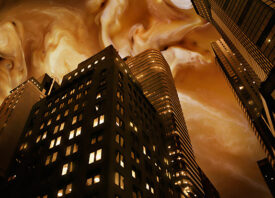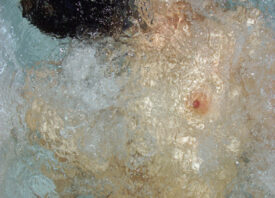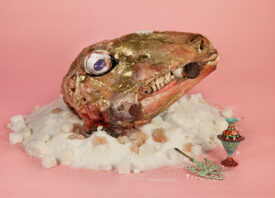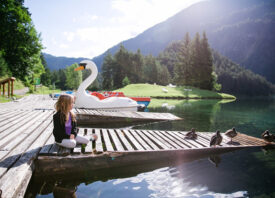Search this site
Aimee Beaubien’s Exotic, Swirling Images Combine Photography and Collage
Chicago-based artist and photographer Aimee Beaubien‘s work is an exotic mixture of color, meaning, and form that reflects her vast array of skills and experiences. Her process is two-fold—she starts off as photographer, first taking the photos, and then moves to cutting them up by hand, reassembling them into elaborate, swirling ensembles. She recently told us more about how she makes these dazzling visual anomalies.
Why cut up your own photos?
“Everything feels like a fragment to me. I am sensitive to how I use the camera to cut a frame around my subject. The cutting continues as I compulsively make more fragments out of my prints in an effort to puzzle together new picture relationships. Why do I do it? Well, I cannot resist the opportunity to test the potential in regenerative forms. The manner of manipulation relates to how I imagine visual material circulating through my mind, memory, and body.”
Is it important that the images refer back to a particular source?
“What appears in my photographs is important to me in the process of making. The photographs provide direction for the transformation that they undergo. While the final form has undergone significant transfiguration there are still clues available to decipher. On closer inspection there are compelling connections to discover where different photographic subjects connect, overlap and intersect. It is important that they are photographs because when they are recognized as photographs we anticipate the existence of discernible moments.”
Tell us a little bit more about your actual process.
“After I have printed many images I organize them into collections to use for collage material. Then I lay one grouping out so that I can evaluate landscape of the subject matter—pattern, texture, color and contrast.
“One image becomes the starting point. While viewing the image backwards on a light table I draw a corresponding shape on the back of the photo. The first cut is usually blind as I follow the drawn line on the reverse side. Then I start making choices in relationship to the first form. Many things influence my decision making process—what I am reading, listening to, the things I have seen, coupled with my desire to keep pushing the potential.”
Photographs are often a conversation between representation and objectness. Your work seems more skewed to the visceral object than what is in them. How do you see them?
“I agree with you that my collages seem to be more skewed towards the visceral. I want to deliver active visual experiences that have the potential to convey meaning even when a specific meaning seems elusive. As the eye travels over and under and around there are opportunities to get lost and to discover associations. My collages are objects and on occasion you can clearly see the materials depicted in the photographic fragments.”
This post was contributed by photographer Patty Carroll.











